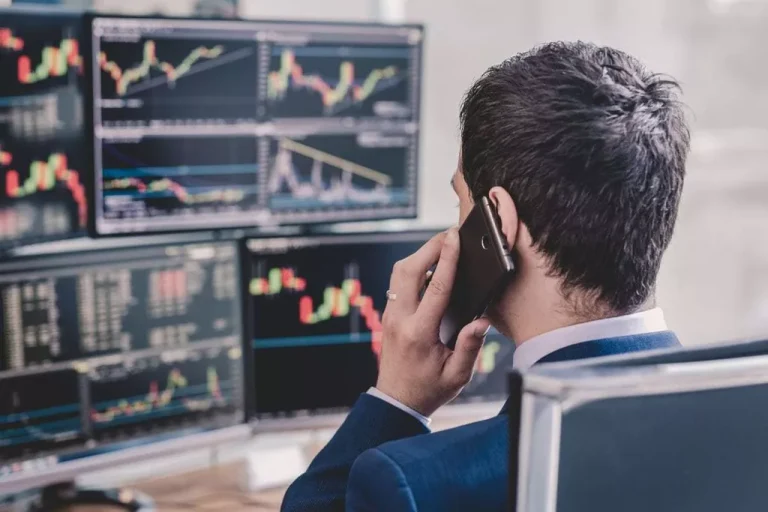Content
With the difficulty of market timing, and the time and effort required, my bias is towards passive investing. In addition, you can see what the Innovation Fund is holding before deciding to invest and how much. Traditional venture capital funds require capital commitment first and then hope the general partners will https://www.xcritical.com/ find great investments. The main things you can do to grow your net worth through investing is minimizing fees, being objective about the performance data, investing consistently, and making sure you have a risk-appropriate asset allocation. Once you do those things, all you’ve got to do is wait and you will eventually grow rich.
Common active investing methods and tools
Its primary goal Proof of space is to provide investors with capital growth by closely replicating the performance of the S&P Global 100 Index, which consists of some of the largest multinational companies worldwide. By following this passive investment strategy, the fund ensures low management costs and minimal deviation from the index. People hope they’ll achieve returns like the top 1% of active managers. Pretty interesting how they’ve made a big shift away from domestic equity to hedge fund & private equity. Given their influence on the investing world, I imagine people will continue pouring money into active funds chasing high hopes.
Morningstar’s Active/Passive Barometer
These weights guide index fund managers on how much to allocate to each company in their funds. Active investors try to beat the market by predicting which investments will outperform the market average and including them in their portfolio while excluding those they think will underperform. Actively managed investments charge larger fees to pay for the extensive research and analysis required to beat index returns. But although many managers succeed in this goal each year, few are able to beat the markets consistently, Wharton faculty members say. When you own fractions of thousands of shares, you earn your returns simply by participating in the upward what are the pros and cons of active investing trajectory of corporate profits over time via the overall stock market.
Understanding Passive and Active Investing
To illustrate, we’ll return to our $3 trillion-dollar Canadian stock market, and each company’s weighting within the total market. Now, let’s look at how this zero-sum game stuff applies to active versus passive investing. While markets have long-term expected returns, it’s important to understand that “risk” means there will be market downturns.

Assessing portfolio manager track record
Using it, investors purchase the securities in a representative benchmark, such as the S&P 500 index, and hold them for a long time. In September, SPIVA reported that results for the first half of 2022. Those six months experienced a bear market that saw the S&P 500 sink 20%.
While this discussion has thus far focused on equity markets, other asset classes offer unique opportunities and challenges for investors. Fixed income indices, for example, tend to be difficult to replicate in an ETF or index fund due to the large number of individual securities—such as the Barclays U.S. Corporate High Yield Index, which has almost 2,200 names. While a single corporation may only have one or two classes of common stock, it typically will have a relatively large set of different fixed income securities outstanding. These bonds are often of varied structures, maturities, and even credit levels. Some specialize in picking individual stocks they think will outperform the market.
- This material should not be viewed as advice or recommendations with respect to asset allocation or any particular investment.
- Research by Wharton faculty and others has shown that, in many cases, “active” investment managers are not able to pick enough winners to justify their high fees.
- Help investors who require top level financial planning and investment advice.
- Accordingly, there can be no assurance that estimated returns or projections will be realized or that actual returns or performance results will not materially differ from those estimated herein.
- Generally speaking, the goal of active managers is to “beat the market,” or outperform certain standard benchmarks.
That’s done in part by simplifying the portfolio construction process. It’s also done by reducing the fees that are triggered by frequent trading. In addition, index mutual funds are larger on average than actively managed funds, so economies of scale help lower relative costs. Second, active management tends to perform better when stocks are not moving in sync. When dispersion is high, managers may have greater opportunity to enter or exit positions at favorable prices, offering more of a gateway for the skillful manager to add value. Of course, this can also lead to greater underperformance from less skilled active managers.
Over the year, the value investor earns 15% before fees, and 13% after fees, beating the market by 3%. The growth investor earns a gross return of only 5%, and this return drops to only 2% after fees. A year goes by, and in our illustration, you receive the stock market return of 10%, before costs. And because passive investing costs are low, your after-fee return will be around 9.94%, or just slightly less than the market return. Dividing each company’s value by the total value of the Canadian stock market provides us with a percentage weight for each, otherwise known as its “index weight”. For example, at the end of 2021, Shopify had the largest index weight, at around 6.6%, followed by RBC and TD, which made up 6.4% and 5.9% of the Canadian stock market, respectively.

If we sort these 300 or so companies from largest to smallest based on the value of their shares available to regular investors, we find familiar names at the top of our list, including Shopify, Enbridge, and the Big Five banks. But this figure doesn’t penalize the 32 actively managed funds that were merged or liquidated out of existence during this period, most likely due to their poor performance. Mutual fund companies don’t generally scrap winning funds from their product line-up.
Fee structures are increasingly unbundled for all funds, so this is less of an issue in newer scorecard reports; however, the scorecards still present an overly negative assessment of active manager skill, especially in older reports. Most notably, the headline statistics of these reports are computed on an equal- weighted basis, meaning that every fund has the same impact, regardless of size. But it turns out that investors are actually good at picking managers, so that dollar-weighted returns (which SPIVA and Morningstar provide) are almost always higher than the equal-weighted returns. For example, in the year-end 2023 SPIVA report, more than 85 percent of the observations for U.S. equity funds were higher on a dollar-weighted basis than on an equal-weighted basis. Cremers et al. caution that managers’ ability to create value varies with market conditions, citing research finding that active managers do better when trading volumes are higher and the economy weaker.
The majority of my employees would have their paperwork to Vanguard cashing out their contributions before the check even cleared. Yes, they would pay the penalty and taxes and use the money as a bonus. In this time, my net worth has skyrocketed partially thanks to better money management.
As always, think about your own financial situation, your life stage, and your ability to tolerate risk before you invest your money. Investing in the Vanguard Total World Stock ETF can be a great way to diversify your holdings across numerous stocks and sectors. Of course, Investor 1 and Investor 2 wouldn’t be much fun if they didn’t have different opinions about which stocks were going to outperform over the next year. Based on their preferences, they trade with each other until they are both relatively happy with their portfolio. If we combine these 32 funds that didn’t survive with the 27 funds that did survive, but underperformed the index, we now have 59 underperforming funds out of a total of 70, or 84.29%. This figure is noticeably higher than the uncorrected 71.05% figure, which didn’t adjust for survivorship bias.
Get stock recommendations, portfolio guidance, and more from The Motley Fool’s premium services. For high-income executives, the road to financial independence might feel well-paved thanks to high earnings. However, competing financial demands ranging from a mortgage and lifestyle expenses to. The first passive index fund was Vanguard’s 500 Index Fund, launched by index fund pioneer John Bogle in 1976. Morgan Stanley Investment Management is the asset management division of Morgan Stanley. As FIGURE 7 shows, the technology sector made up 28% of the S&P 500 Index at that time.
Passive, or index-style investments, buy and hold the stocks or bonds in a market index such as the Standard & Poor’s 500 or the Dow Jones Industrial Average. A vast array of indexed mutual funds and exchange-traded funds track the broad market as well as narrower sectors such as small-company stocks, foreign stocks and bonds, and stocks in specific industries. Many investment advisors believe the best strategy is a blend of active and passive styles, which can help minimize the wild swings in stock prices during volatile periods. Passive vs. active management doesn’t have to be an either/or choice for advisors. Combining the two can further diversify a portfolio and actually help manage overall risk. Clients who have large cash positions may want to actively look for opportunities to invest in ETFs just after the market has pulled back.
Passive investing attempts to replicate market performance by constructing well-diversified portfolios of stocks, which if done individually, would require extensive research. Investors should seek financial advice regarding the suitability of any investment strategy based on their objectives, financial situations, and particular needs. This article is not designed or intended to provide financial, tax, legal, accounting, or other professional advice since such advice always requires consideration of individual circumstances. If professional advice is needed, the services of a professional advisor should be sought.
